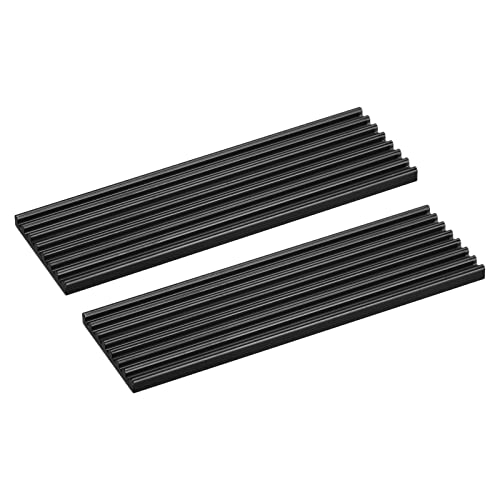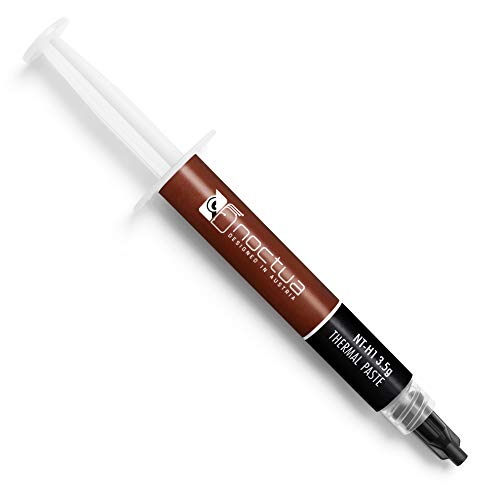Understanding M.2 SSD Coolers: What They Are and Why We Need Them
What is an M.2 SSD Cooler?
An M.2 SSD cooler is a specialised component designed to keep your M.2 solid-state drives at an optimal temperature while they work. When we use our computers for demanding tasks such as gaming or video editing, the SSD can generate heat due to the high amount of data it processes. This can lead to thermal throttling, where the drive automatically slows down to prevent overheating, adversely affecting performance. By installing an M.2 SSD cooler, we enhance the airflow around the drive, ensuring it runs cooler and performs better.
Why Do We Need Them?
M.2 SSD coolers are crucial for maintaining the longevity and efficiency of our drives. Overheating can lead to wear and tear, potentially decreasing the lifespan of the SSD. Furthermore, many modern systems come with features that require high speed and efficiency from the storage devices. Without proper cooling, we might not be able to utilise the full capabilities of the SSD, especially during intensive tasks. Hence, investing in an M.2 SSD cooler is essential for anyone looking to maximise their system’s performance.
Key Features to Look for in an M.2 SSD Cooler
Material and Build Quality
When selecting an M.2 SSD cooler, the material it’s made from plays a significant role. Aluminium is a popular choice due to its ability to dissipate heat efficiently while being lightweight. Some coolers also incorporate copper to provide enhanced cooling capabilities. A solid build quality ensures that the cooler will fit securely and not damage your SSD during installation.
Size and Compatibility
We must consider the size of the M.2 SSD cooler. Not all SSDs have the same form factor, and not all motherboards accommodate every cooler. Therefore, it’s wise to check your motherboard’s specifications, ensuring the cooler fits without blocking other components. Some M.2 SSDs are longer than others, so compatibility is key to avoid issues during installation.
Cooling Method: Active vs. Passive
Coolers generally utilise either passive or active cooling methods. Passive coolers use materials to dissipate heat without any moving parts, while active coolers incorporate fans or heatsinks for better airflow. Passive coolers are generally quieter, but on the other hand, active coolers can provide superior heat dissipation for high-performance settings. We recommend considering the quietness and cooling needs of your specific use case.
Ease of Installation
Installation can vary significantly between different M.2 SSD coolers. Some feature a straightforward design that allows us to attach them easily with minimal tools, while others might require additional hardware or more intricate steps. Looking for a cooler that boasts user-friendly installation will save us time and effort during setup.
How to Choose the Right M.2 SSD Cooler for Your Setup
Assess Your System’s Requirements
First, we ought to evaluate our current system to determine what we need from an SSD cooler. If our computer is used for everyday tasks, a basic cooler might suffice. However, if we are into gaming or video editing, a more advanced cooler with active cooling features would be beneficial. Understanding our specific requirements will guide our decision.
Check Reviews and Recommendations
Before purchasing, it’s helpful to read reviews and gather recommendations based on reliability and performance. Insights from other users can help us identify which models are proven to work effectively. We should look for detailed reviews that discuss installation processes, temperatures achieved, and overall efficiency.
Balance Between Performance and Budget
Price can vary significantly among different models, and while we want to invest in quality, it’s also important to stay within our budget. Balancing our needs with the price will lead us to a cooler that provides good performance without unnecessarily breaking the bank. If we find a well-reviewed budget option, it might serve our needs without overextending our finances.
Installation Guide: Setting Up Your M.2 SSD Cooler Easily
What You’ll Need
Before starting the installation, we should prepare our workspace. Gathering the necessary tools such as a screwdriver is vital. Additionally, we may want to use an anti-static wrist strap to protect delicate components from electrostatic discharge. Having our M.2 cooler close at hand will also streamline the process.
Step-by-Step Installation Steps
To begin, we must first power down our computer and unplug it from the electrical outlet. Removing the side panel of the case will grant us access to our motherboard. We then locate the M.2 slot where our SSD is installed. If there’s a thermal pad included with the cooler, we place it on the SSD to enhance heat transfer. Next, we carefully position the cooler over the SSD, aligning it with the mounting holes and securing it with screws. Once installed, we replace the computer’s side panel and reconnect the power, completing the setup.
Performance Benefits of Using an M.2 SSD Cooler
Reduced Throttle and Increased Speed
One of the primary performance benefits of using an M.2 SSD cooler is the reduction of thermal throttling. By maintaining lower temperatures, the cooler allows our SSD to maintain peak performance for extended periods. This results in faster load times and a smoother experience, especially during intensive tasks.
Enhanced Lifespan of the SSD
With consistent cooling, our M.2 SSD can operate at optimal temperatures, which directly contributes to its longevity. Stable operating conditions reduce wear and tear on components, extending the overall lifespan of our storage device. This means we won’t need to replace our SSD as frequently, saving us money in the long run.
Stable Performance in High-Load Scenarios
For those of us who push our systems to the limit, such as in gaming or content creation, an M.2 SSD cooler will ensure stable performance. This guarantees that our system won’t stutter or lag due to thermal issues. With proper cooling, we can fully enjoy the demanding applications and take advantage of the high-speed capabilities that modern SSDs offer.
































